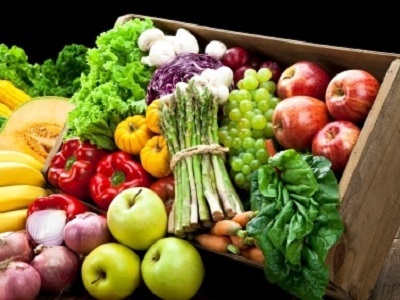 As we age into our senior years, it is increasingly important to be aware of our diets—in addition to keeping fit through exercise. Since March is National Nutrition month, I’ve asked Joy Kelly, BA to contribute suggestions of food that can contribute to our health. At the end of Joy’s article, there is a list of fruits, vegetables, spices, nuts and grains and their benefits. – Lori
As we age into our senior years, it is increasingly important to be aware of our diets—in addition to keeping fit through exercise. Since March is National Nutrition month, I’ve asked Joy Kelly, BA to contribute suggestions of food that can contribute to our health. At the end of Joy’s article, there is a list of fruits, vegetables, spices, nuts and grains and their benefits. – Lori
“Eat whole foods. Not too much. Mostly plants.”
― Michael Pollan, In Defense of Food: An Eater’s Manifesto
Pollan’s book, Omnivore’s Dilemma, was really eye-opening for me; I keep reading about the need for not just eating more plants, but eating a really wide variety of them.
And it makes sense, right? If you ate nothing but apples and carrots all day, you probably wouldn’t get all the nutrition you need.
The newest research shows that people who eat fewer than 10 different plants per week have compromised health (most of America) and even those who eat 20 are not optimizing their health the way that those of us who strive for 30+ different plants every week!
Much of it has to do with our gut and the flora that live in it: our microbiome. Each bacterium has their own set of nutritional needs and as we evolved on a wide variety of mostly plant matter, so did our bacteria!
That’s not just fruits and vegetables, but anything that has been grown, such as seeds, spices and wholegrain. Your diet should be derived from all six different plant groups: fruit, vegetables, seeds, nuts, wholegrains and legumes (such as lentils, chickpeas and beans).
A healthy microbiome is thought to lower the risk of certain cancers, reduce the chance of Type 2 diabetes and heart disease, and massively increase our happiness.
And as each bacterium does a different job — including producing vitamins, hormones or chemical messengers; training our immune system; helping regulate our appetite or deactivating toxins — each brings its own unique health benefits.
But making a healthy gut is not the only thing that a wide variety of plants can do for us!
Research shows that plant-based diets are a cost-effective and low-risk way to lower body mass index, blood pressure and cholesterol levels. A plant-based diet may also reduce the number of medications needed to treat chronic diseases and lower heart disease mortality rates. Everyone should consider a plant-based diet, especially those of us with high blood pressure, diabetes, cardiovascular disease, or obesity.
The reason for these outcomes is two-fold. First, there are inherent benefits to eating a wide variety of health-promoting plants. Second, there is additional benefit from avoiding the harmful components found in animal products and processed foods.
And, there are infinite advantages to the vast array of nutrients found in plant foods. Phytochemicals and fibers are the two categories of nutrients that are possibly the most health-promoting and disease-fighting. Plants are the only source of these nutrients; they are completely absent in animals. Plants contain thousands of phytochemicals, such as carotenoids and flavonoids, which perform many beneficial functions.
Fibers found in whole plant foods powerfully support the gastrointestinal, cardiovascular, and immune systems through multiple mechanisms. More than 90% of adults and children in the U.S. do not get the minimum recommended dietary fiber!
So, it’s clear that it’s beyond advantageous for us to pursue plant-based eating to achieve optimal health outcomes.
A few plants you may want to consider adding to the ones you habitually eat…remember to think variety!
- Dates A great source of prebiotics — specific kinds of fibers that feed beneficial bacteria in our gut. The potential health benefits of prebiotics are vast, from improving blood-sugar control and appetite regulation to supporting bone and skin health.
- Flaxseeds Like red wine, flaxseeds are an excellent source of polyphenols, plant chemicals mostly go unabsorbed in the upper gut, as humans cannot digest them, so they end up in the lower gut, where bacteria transform them into absorbable compounds, linked with health benefits.
- Pistachios While it’s a good idea to include any kind of nuts in your diet, pistachios contain the highest level of prebiotics, along with cashews.
- Damaged fruit We tend to avoid ugly-looking fruit, but they may contain more beneficial plant chemicals as plants produce these under stress to protect themselves. So, a perfect piece of fruit may not be as good for you.
- Cauliflower Studies show that the plant chemicals in cauliflower directly support the health of the immune cells that line our intestine. The chemicals help strengthen the gut lining, and as 70% of our immune system is on that digestive tract, that is a major boost to our resilience.
- Turmeric The active ingredient, curcumin, has anti-inflammatory effects on the gut.
- Chia seeds Not only are these tiny seeds thought to help with pooping, but they are also very high in omega 3. And it’s not just your brain that likes omega 3; our microbes feast on them as well.
- Pomegranates Their taste makes pomegranates an easy plant addition to many dishes and they are a great prebiotic food.
- Seaweed Studies show seaweed trains guts to work differently — with regular consumption your bacteria develop the ability to digest it.
- Dried mango Perfect for sweet cravings; it’s full of helpful prebiotic fibers.
- Quinoa A great way to consume protein because it contains fiber — and our gut microbes like fiber and protein to be combined.
- Rosemary Herbs are a good source of polyphenols. Herbs such as rosemary, basil, thyme and sage are great options. I put fresh herbs into almost every meal I eat!
- Cinnamon Adding powdered cinnamon to food can increase plant chemical intake.
- Sauerkraut Fermented foods such as sauerkraut and kimchi (fermented vegetables) can introduce helpful bacteria.
- Blueberries One of the richest dietary sources of polyphenols.
- Garlic One of the highest vegetable sources of fructans (a prebiotic), which is also concentrated in onions.
- Olives Both green and black olives are very high in polyphenols and are an easy way to add another plant food to your week.
- Ginger Studies show this soothes the digestive tract and is also very high in polyphenols.
- Cocoa Very high in flavanols (another polyphenol) and trials show it has good heart and brain benefits. Many of dark chocolate’s benefits are due to digestion by good bacteria. The raw version, cacao, has more flavanols, but the processed version is a good start.
- Mushrooms I choose those sold by supermarkets that are exposed to UV light to increase their vitamin D content. Or leave button mushrooms on a windowsill to achieve the same effect. Maximizing vitamin D intake is linked to better gut health along with reducing depression and a whole host of other benefits!
- Asparagus A great source of prebiotics and fiber. Research suggests asparagus promotes good bacteria in the gut and is also said to have anti-inflammatory benefits.
- Walnuts A study found a handful a day for three weeks increased the microbes that produce a short-chain fatty acid called butyrate, which helps nourish the gut lining. Walnuts were also linked with a decrease in compounds linked to colon cancer.
- Cumin This spice has plant bioactives linked to improved digestion and immunity. Curry powder contains cumin.
There you have it! Twenty-three new plants to add to what you’re already eating! Jake and I start our day, every day, with muesli, made with 10 different plants topped with a whole food plant concentrate containing another 18 plants…we’re off to a great start toward 30 different plants for the week.
Joy is half of Jake and Joy, a mother-daughter team who help people transform their lives by adopting some simple habits in the areas of health AND success. See more at their website.
